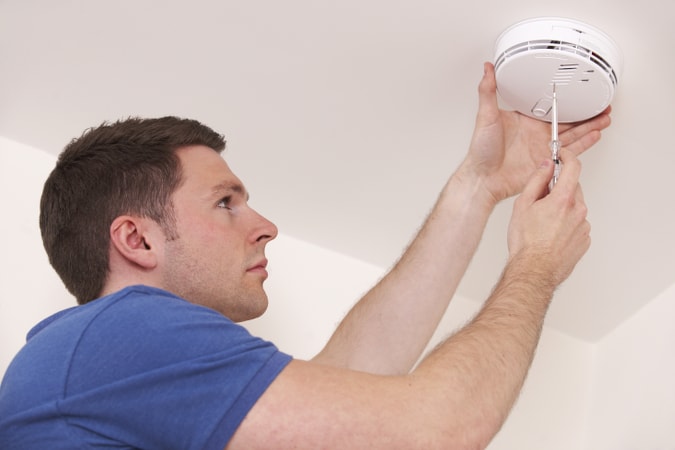Why do you need Carbon monoxide detectors? Carbon monoxide is an odourless, colourless gas produced by any fuel-burning fixture or appliance, including fireplaces, furnaces, gas ranges, cars or trucks, lanterns, and stoves. You may not notice carbon monoxide building up in your homes because of its colourless and odourless nature. Carbon monoxide is caused due to improper venting in the appliances or devices. There’s a significant risk of carbon monoxide accumulation if your home is sealed for energy efficiency and reduces air transfer inside and outside.
Carbon monoxide is harmful because it cuts down the air’s oxygen levels and forms a toxic compound in your body if inhaled. According to the CDC, carbon monoxide poisoning can cause death. It is especially dangerous for older people, children, and those having breathing problems. To avoid these hazardous effects, learn how to keep yourself and your family safe by installing a carbon monoxide alarm.
Where should you place carbon monoxide detectors in your homes? Consider this
Carbon monoxide (CO) detectors placement: Do’s
Place carbon monoxide detectors in the following places to protect your homes from increased levels of carbon monoxide
- Place a CO detector on every floor to ensure maximum safety to your home
- CO detectors should be placed five feet from the ground to obtain the best reading of your home’s air
- It is necessary to place carbon monoxide detectors near the sleeping area so that they can awaken everyone when an emergency exists
- If you have an attached garage, a CO detector should be placed near the garage to warn you if there’s a problem due to carbon monoxide produced by cars.
- Consider the specifications recommended by the manufacturer when deciding the place of a CO detector.
Carbon monoxide (CO) detectors placement: Don’ts
Placing the CO detector in the following places can create false alarm or your sensor won’t identify the CO levels properly
- Direct sunlight
- Close to fan, vent or open window
- In humid areas such as bathrooms
- Close to any fuel-burning appliance
How much Carbon monoxide (CO) is considered too much?
How to know how much CO is too much? It is calculated considering your size, age, and health. Take a look at some standard thresholds of carbon monoxide
- 0.5-5 ppm – According to the EPA (Environmental Protection Agency), this is considered the average range for homes or places without gas appliances
- Under 70 ppm – Many people won’t experience any severe effects when exposed to CO less than 70 ppm for short periods. According to CPSC (Consumer Product Safety Commission), carbon monoxide exposure for long hours (6-8) can cause headaches and dizziness, and people with heart problems may experience chest pain.
- 100 ppm – Exposure of CO for 2 hours or longer can cause a slight headache
- 150-200 ppm – Prolonged exposure at high ranges can cause unconsciousness and disorientation that can also cause death.
How to measure Carbon monoxide?
Step 1 – Purchase the right Carbon monoxide detector
Step 2 – Install the CO alarm at the right place considering the Do’s and Don’ts for its placement
Step 3 – Learn to read the levels of Carbon monoxide by reading the instruction manual
Step 4 – Take a blood Carbon monoxide reading in case of carbon monoxide exposure
Step 5 – Maintain safety precautions in areas where there are gas stoves
Carbon monoxide alarm installation is necessary to protect your family and home from the ill effects of Carbon monoxide poisoning. To know more about the CO detector and its installation, contact Riowell today!

